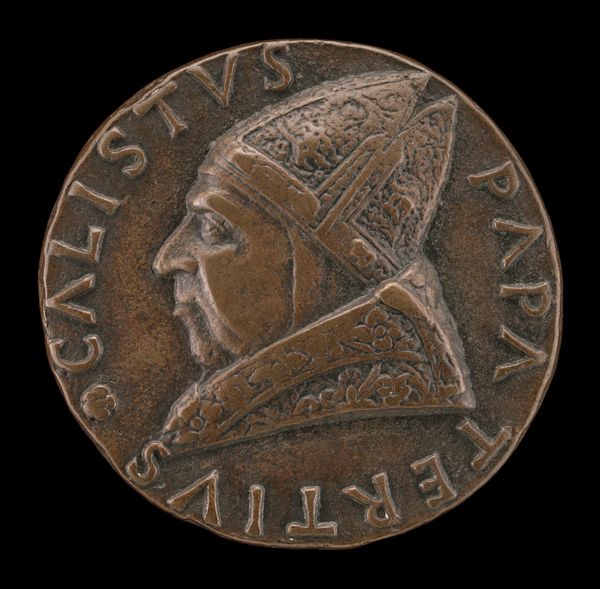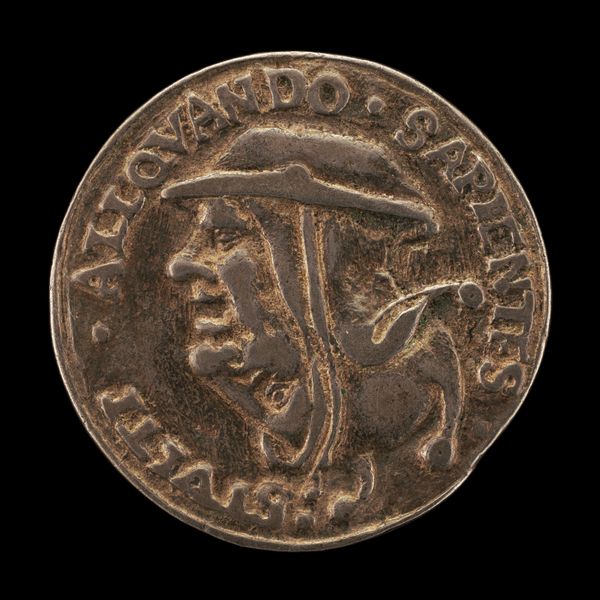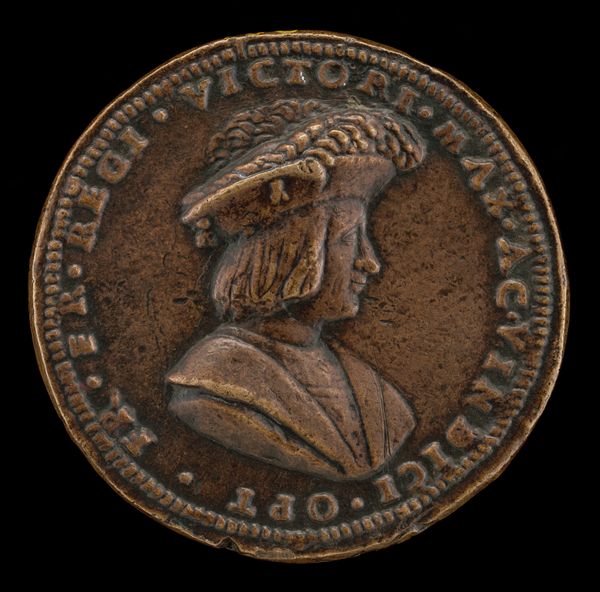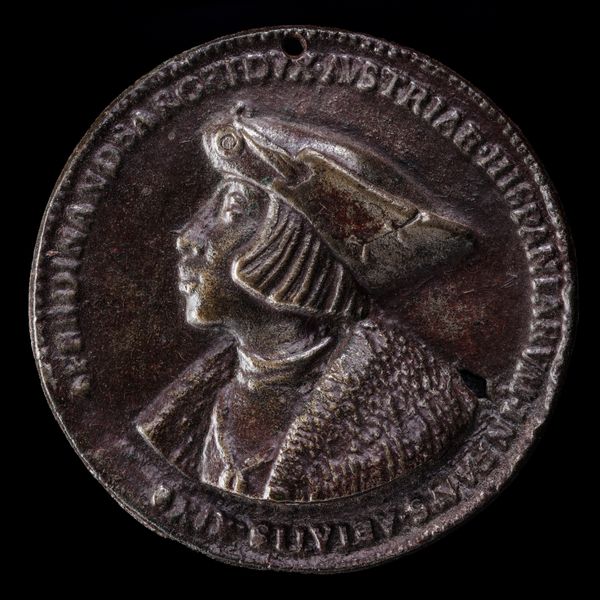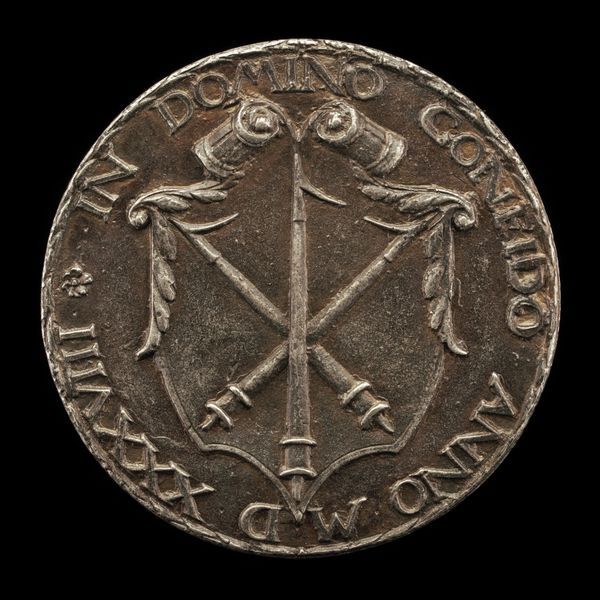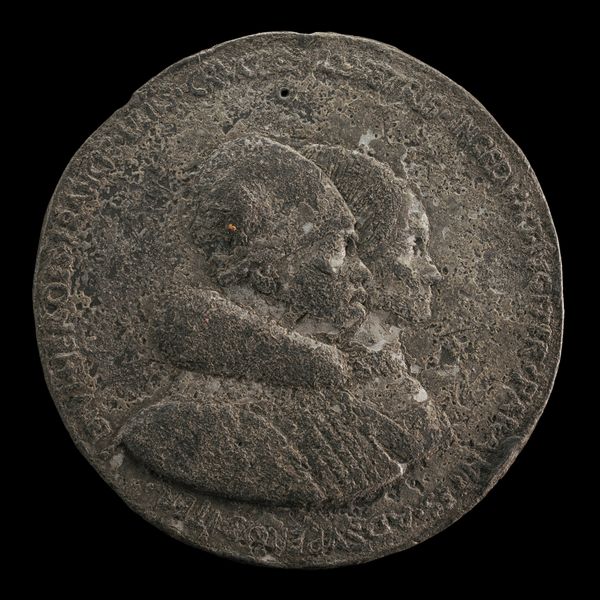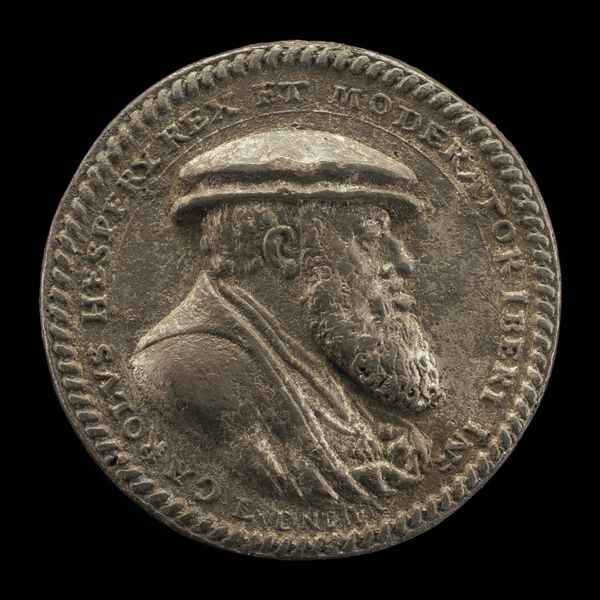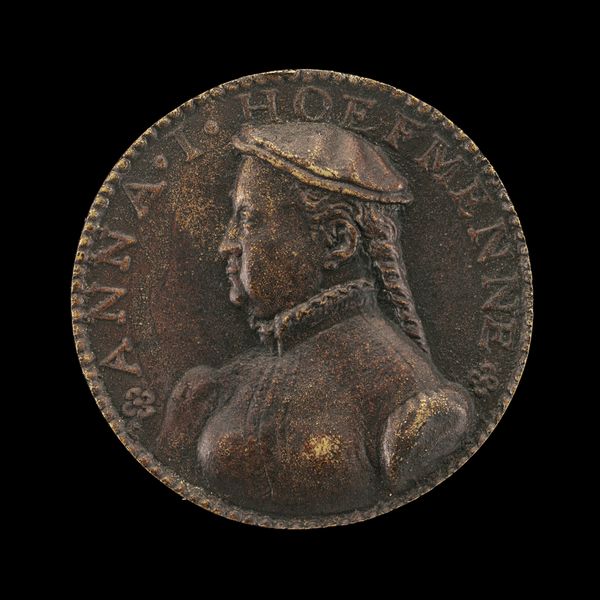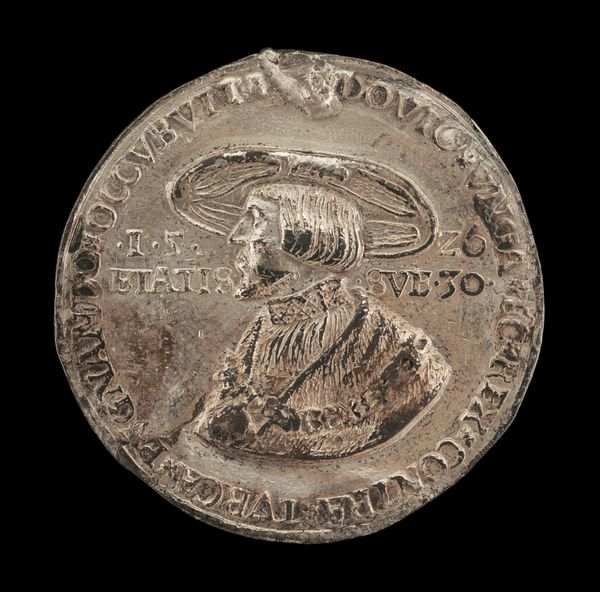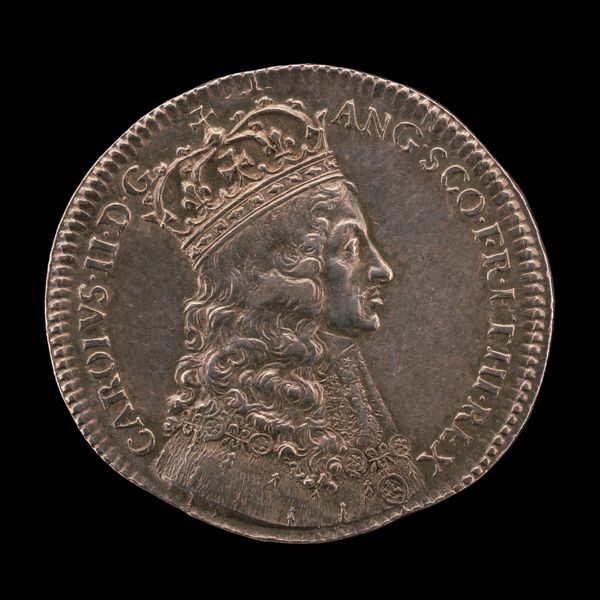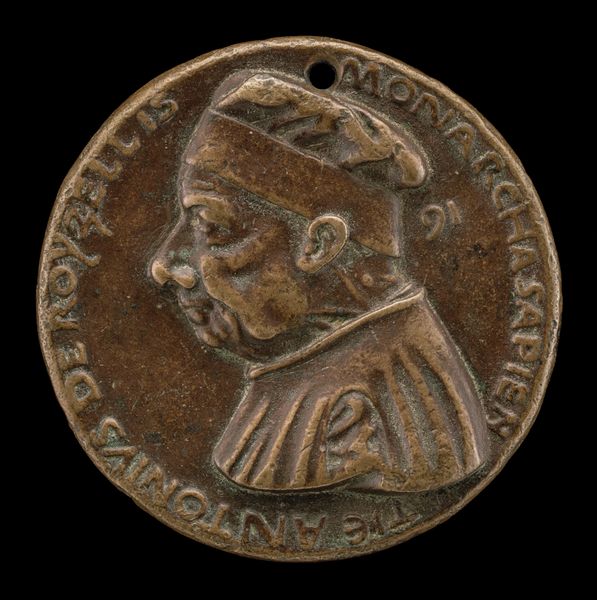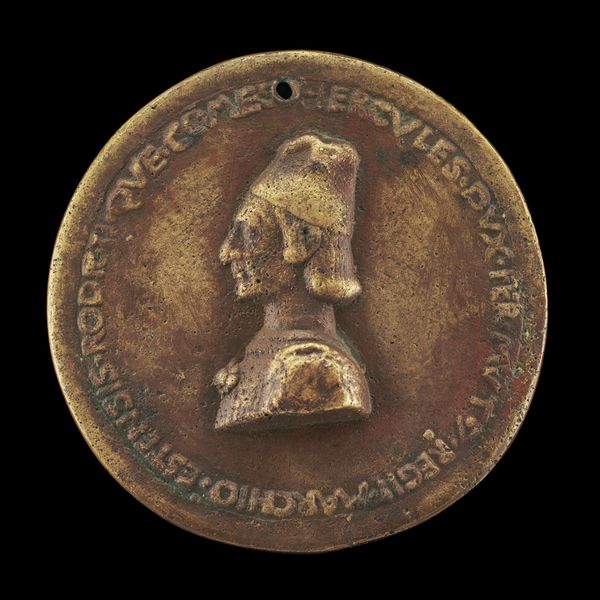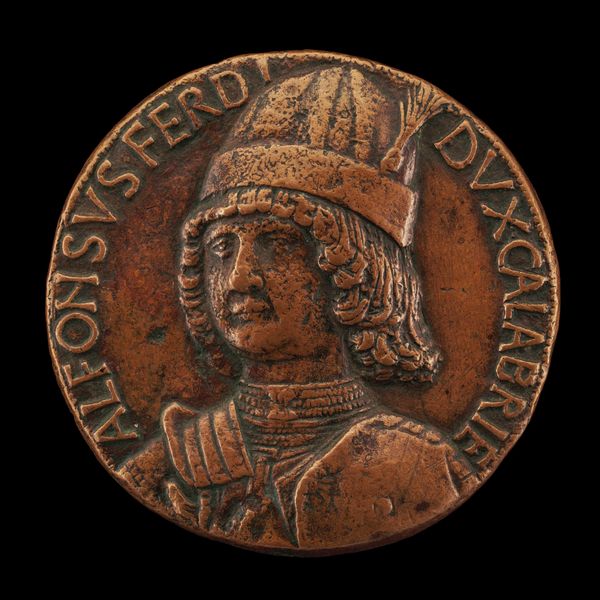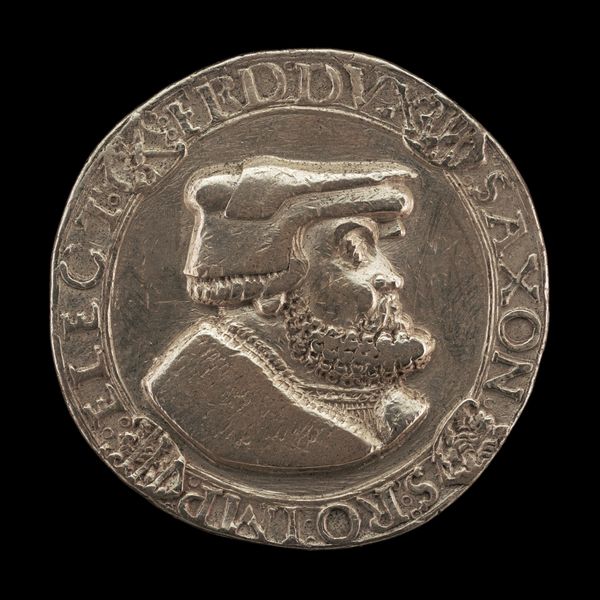![Andrea Gritti, 1455-1538, Doge of Venice 1523 [obverse] by Andrea Spinelli](/_next/image?url=https%3A%2F%2Fd2w8kbdekdi1gv.cloudfront.net%2FeyJidWNrZXQiOiAiYXJ0ZXJhLWltYWdlcy1idWNrZXQiLCAia2V5IjogImFydHdvcmtzL2E3ZDYyN2ZjLThjMDgtNDFjZC1hY2ExLWMyOWE4N2IyMWM1MS9hN2Q2MjdmYy04YzA4LTQxY2QtYWNhMS1jMjlhODdiMjFjNTFfZnVsbC5qcGciLCAiZWRpdHMiOiB7InJlc2l6ZSI6IHsid2lkdGgiOiAxOTIwLCAiaGVpZ2h0IjogMTkyMCwgImZpdCI6ICJpbnNpZGUifX19&w=3840&q=75)
bronze, sculpture
#
portrait
#
medal
#
sculpture
#
bronze
#
11_renaissance
#
sculpture
#
italian-renaissance
Dimensions: overall (diameter): 3.64 cm (1 7/16 in.) gross weight: 25.93 gr (0.057 lb.) axis: 6:00
Copyright: National Gallery of Art: CC0 1.0
Curator: What catches my eye immediately is how utterly *present* this man feels, despite being immortalized in bronze nearly five centuries ago. Editor: Indeed! What we're looking at here is a bronze medal dating to 1534, a portrait of Andrea Gritti, the Doge of Venice, who reigned from 1523 until his death in 1538. It’s a striking example of Italian Renaissance portraiture, meant to commemorate and project power. Curator: Power, yes, but also… I see a hint of melancholy, maybe? Those eyes have seen a lot, you know? The artist really captured that weight in his gaze. It's not just about authority; it's about the person holding that authority. Editor: Well, that's precisely the point. The Renaissance saw a resurgence in individualized portraiture, moving away from purely symbolic representations of rulers. These medals, often commissioned by the subjects themselves, served as portable propaganda, showcasing their likeness and accomplishments. Think of them as early modern trading cards for the elite. Curator: Trading cards of wisdom! Look at the intricate detailing of his beard, the texture of his hat, the solemnity in his mouth! It’s all so… tactile, isn't it? It makes me want to reach out and touch it. Editor: The medium contributes to that effect, I think. Bronze, with its rich, earthy tones, lends a sense of gravitas. It's not as overtly opulent as gold or silver, but there's a strength and permanence about it that speaks to the enduring legacy of the sitter. Moreover, producing multiples allowed wider, though still elite, distribution. Curator: It's incredible to think of all the hands this little bronze disc might have passed through over the centuries. Imagine the stories it could tell! Not just of doges and politics, but of ordinary lives brushing against history. Editor: Absolutely. And while the front, the obverse, depicts Gritti, the reverse usually presented allegorical imagery or further emblems of his authority, deepening our understanding of the medal's intended message and function within Renaissance society. It really encapsulates that period’s understanding of power, legacy and representation. Curator: It gives you goosebumps, right? The artist really succeeded in doing what all artist dream to accomplish; capture the truth. The way we still look at this bronze, finding insight into it’s persona really captures how truth can outlive power.
Comments
No comments
Be the first to comment and join the conversation on the ultimate creative platform.
